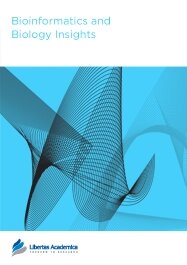

Publication Date: 07 Mar 2013
Type: Review
Journal: Bioinformatics and Biology Insights
Citation: Bioinformatics and Biology Insights 2013:7 83-95
doi: 10.4137/BBI.S11213

Bacterial, small RNAs were once regarded as potent regulators of gene expression and are now being considered as essential for their diversified roles. Many small RNAs are now reported to have a wide array of regulatory functions, ranging from environmental sensing to pathogenesis. Traditionally, noncoding transcripts were rarely detected by means of genetic screens. However, the availability of approximately 2200 prokaryotic genome sequences in public databases facilitates the efficient computational search of those molecules, followed by experimental validation. In principle, the following four major computational methods were applied for the prediction of sRNA locations from bacterial genome sequences: (1) comparative genomics, (2) secondary structure and thermodynamic stability, (3) ‘Orphan’ transcriptional signals and (4) ab initio methods regardless of sequence or structure similarity; most of these tools were applied to locate the putative genomic sRNA locations followed by experimental validation of those transcripts. Therefore, computational screening has simplified the sRNA identification process in bacteria. In this review, a plethora of small RNA prediction methods and tools that have been reported in the past decade are discussed comprehensively and assessed based on their attributes, compatibility, and their prediction accuracy.
Keywords: comparative genomics, base composition, ncRNA, sRNA prediction, structure stability, transcriptional signal
PDF (1.25 MB PDF FORMAT)
RIS citation (ENDNOTE, REFERENCE MANAGER, PROCITE, REFWORKS)
BibTex citation (BIBDESK, LATEX)
XML
PMC HTML


We found Bioinformatics and Biology insights very supportive and quick in guiding us in submitting our manuscript. The review of the manuscript was also very prompt. We also found that the review was fair and prompt and that was the most important thing for us. It was a very interesting experience for us. We also liked the video abstract service, which is very novel and encouraging for authors.
Facebook Google+ Twitter
Pinterest Tumblr YouTube